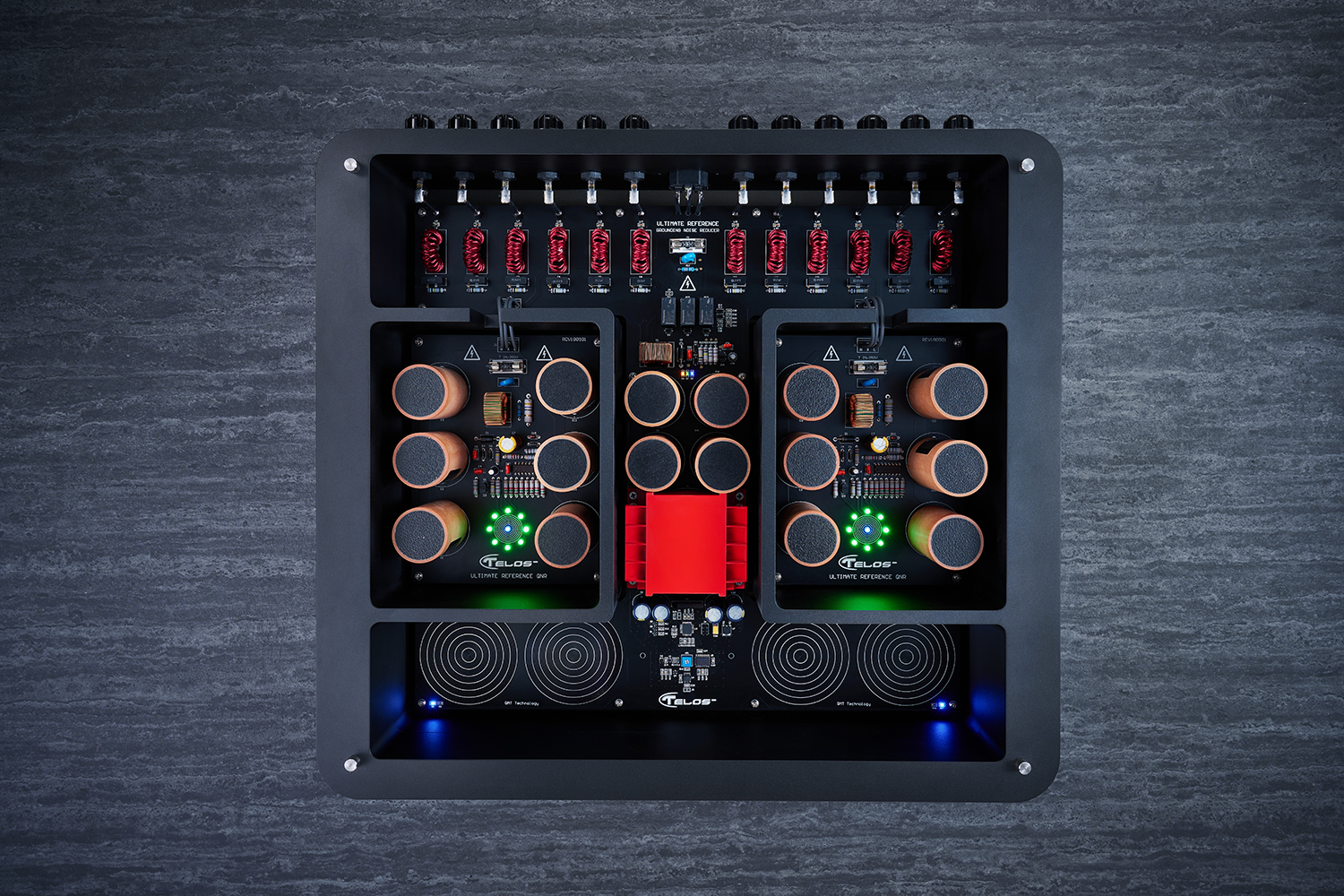I actually requested the GNR V5.1 Plus for review, a product priced at €8,800 (inc. VAT) and whose six terminals, I thought should handle a basic separates system. What they sent me (perhaps acting under the influence of the heap of Wadax, CH and VTL boxes that constitute my main system) was their latest and (literally) greatest product, the Grounding Monster.

Monster by name, monster in practice, the big Telos unit is a serious lump with a price to match. €44,000 to be precise. You’ll stagger under its weight: your wallet will stagger at the weight of the invoice. Perhaps I should be glad that they disn’t send the Raw Power Signature (silver) version – a mere €72,500! Even in a high-end system involving multiple, high priced components, that’s a pretty gulp-inducing price, begging the question as to just how expensive a system needs to be before the Monster becomes a viable proposition? In fact that isn’t really the question at all. What we should be asking is what sort of system set up the Monster will work in and what, working at its best, does it contribute?
Built into a massively constructed, heavily curved and bevelled aluminium chassis, it measures 480 x 440 x 180mm and weighs in at 45kg or around 100lbs. The top plate consists of a large, rebated window that shows you the insides of the unit – although the main reason for it is probably the light show mounted on the symmetrically arranged PCB. Two circles of eight, bright green LEDs, arranged around a blue central beacon, cycle, flash, throb and gyrate with the same apparently random enthusiasm as a set of 80’s disco lights. The clear top-plate and LEDs are features the Monster shares with the V5.1. Their significance is a mystery. There is no explanation as to what they do or why they are there, other than to ram home the difference between this and the inert boxes that make up the average PPG. But what they definitely are is bright enough to be intrusive in a darkened listened room…
In fact, in terms of understanding the Telos technology and approach, the lights are just the tip of the ice-berg. There is little or no explanation to be had from the company’s website and the unit arrived without technical documentation or instructions. I’m not necessarily phased by the lack of technical information. I’m actually much more concerned by what the unit does than how it does it. But, as far as I can understand, a central processor monitors the ground voltage on the Monster’s terminals, actively generating a common reference that adapts to the connected ground potential and adjusts accordingly. So far so good: The million dollar question (as always) is, how do you actually extract the best results from the Telos products? Especially given the lack of guidance. The answer of course, is exhaustive experimentation, starting with a smallish system and a bunch of alternative products with which to mix, match and ring the changes…
The thigh-bone’s connected to…
The challenge with any product under review is maximising its potential. You need to wring the best possible performance out of it before you start assessing its contribution. In this case, that process becomes doubly complicated because system grounding is still an emerging art, with a range of conflicting approaches to the problem: chassis grounding; parallel signal grounds; common grounding or separate; terminating at the AC ground or to a separate, parallel ground; grounding centrally or with dispersed, individual units; grounding as an extension of your cabling or as an independent network… The list goes on and that gives you plenty of options to run through, while the Monster offers its own, integral options. Although there is no identification or indication that the sockets are anything but common, their left/right separation and the symmetrical layout of the board suggests that there are two ‘halves’ to the unit. Are these contiguous or do you separate them, between digital and analogue components, for example?

